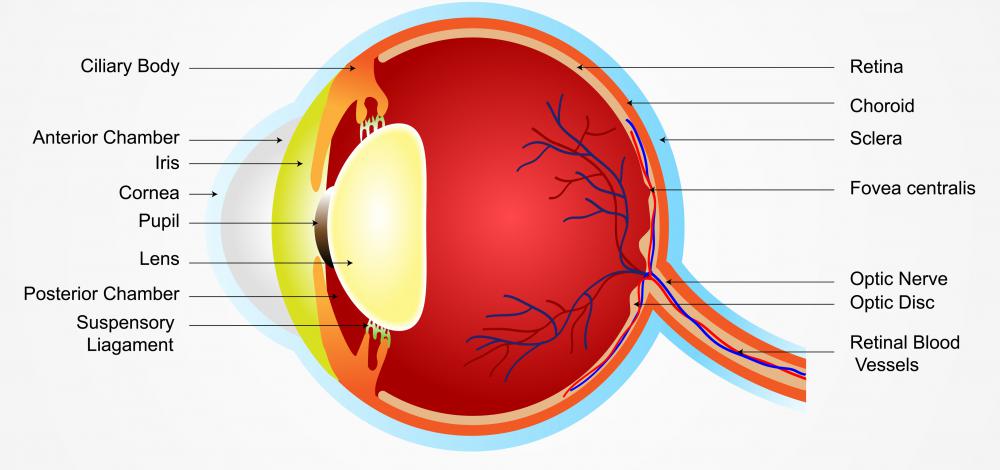At WiseGEEK, we're committed to delivering accurate, trustworthy information. Our expert-authored content is rigorously fact-checked and sourced from credible authorities. Discover how we uphold the highest standards in providing you with reliable knowledge.
What Is the Function of Iconic Memory?
Iconic memory is sensory storage for vision. It functions by temporarily retaining in memory a vision of icons, which are images and forms, even after the image is no longer viewable. This involuntary capability allows the retina of the eye to retain the basic structure of an image even after it leaves and is no longer visible. This temporarily retained iconic image is retained long enough for immediate purposes, and then is either lost or moved to long or short term storage. Iconic memories that have been moved to long term storage can be used to compare similar icons or images at a later time.
Neuroscientists say that iconic memory is not the same image memory used by those who have photographic memory, as that function belongs to a higher visual processing area of the brain. Iconic memory sense storage is used when retaining memory of images between blinks. Without it, vision would consist of disconnected still images without records of the movement of the focus of the retina. This sensory store also allows the brain to process the sense of movement or motion in continuous stream, as when a bird flies across a yard from a tree to a fencepost.

Scientists say the development of iconic memory functions begins in infancy and develops as the visual perception systems does, in stages, establishing strong connections between the information received by the eye’s retina and the brain’s visual processing centers. The adult capacity for iconic memory is fully developed by the time a child is approximately five years of age. The length of time that an image is held, however, increases to match the length of time an adult holds the memory by the age of eleven. Throughout a lifetime, a person’s iconic memory abilities may only decrease by 20 milliseconds between the ages of 20 and 60, barring any unforeseen damages to the brain by injury or disease.

Research into iconic memory functions has found that decline in iconic memory may be linked to early signs of Alzheimer’s disease. Loss of some iconic memory has been found in those who exhibit dysfunctions known as mild cognitive impairments (MCIs), who are most likely to develop Alzheimer’s. The ability to transfer information to short or long term storage is equivalent to much older populations with no history of MCI. In studies, however, the short term memory length and iconic memory length are shortened in MCI patients.
AS FEATURED ON:
AS FEATURED ON:












Discussion Comments
When we learned about this in biology class they told us it is linked to "visual persistence" which is those after images you sometimes get if you stare at something too hard.
They say that's where the idea of "auras" comes from. If you stare at someone for a while, you'll start to get a visual persistence. If your eyes aren't completely still (which they hardly ever will be) you'll kind of smear the "aura" around the person you're looking at, so it will seem like they have a light around them.
I've seen it happen myself when I was having to stare at someone speaking in a meeting for too long.
I guess this is the part of the memory that holds stuff like where things are on the floor of my room.
I can be kind of untidy and sometimes when I turn out the light at night I kind of have to memorize the floor in order to make sure I'm not going to step on anything on my way to bed.
I've always been kind of surprised how easily I can memorize that floor space for a few seconds in order to step around it, because sometimes it's fairly complicated.
But, I guess this kind of visual memory is how it works.
Post your comments